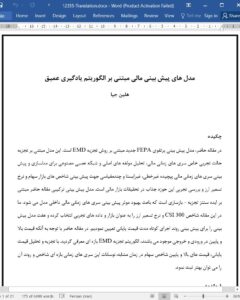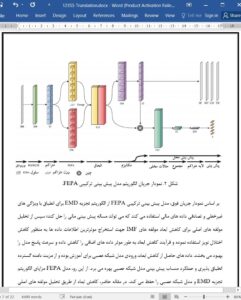In this paper, a new FEPA portfolio forecasting model is based on the EMD decomposition method. ,e model is based on the special empirical modal decomposition of financial time series, principal component analysis, and artificial neural network to model and forecast for nonlinear, nonstationary, multiscale complex financial time series to predict stock market indices and foreign exchange rates and empirically investigate this hot area in financial market research. ,e combined forecasting model proposed in this paper is based on the idea of decomposition-reconstruction synthesis, which effectively improves the model’s prediction of internal financial time series. In this paper, we select the CSI 300 Index and foreign exchange rate as the empirical market and data and establish seven forecasting models to make predictions about the short-term running trend of the closing price. ,e interval EMD decomposition algorithm is introduced in this paper, considering both high and low prices to be contained in the input and output. By analyzing the closing price, high and low prices of the stock index at the same time, the volatility of this interval time series of the index and its trend can be better captured.
1. Introduction
Despite the rapid development of information science and technology and computer networks in the past mortal decade, interdisciplinary research promoting cross fertilization of disciplines, and the application of research methods used in many other disciplines to the financial market forecasting, it is still very difficult to predict the current and future of financial markets. Financial market forecasting is a challenging research topic due to the support of existing financial market theories, as well as the linkage between global financial markets and the specificity of the forecasting time horizon [1]. ,e author feels that the main reasons for the difficulty of financial market forecasting are the financial market itself is a nonlinear, nonstationary, multiscale interval time series, and there are many noisy trading components.
5. Conclusion
In this paper, we propose a FEPA model of deep fractionalneural network paradigm for financial market forecasting. ,e model consists of three parts; the first part of the financial time-series empirical modal decomposition of financial time series data is decomposed to generate multilayer IMF time series; the set of IMF series is transformed by principal component analysis for dimensionality reduction, and then, an artificial neural network model is built for forecasting. Finally, the prediction output of the artificial neural network is combined to produce the total prediction value. In this paper, this generalized FEPA model is specified as a forecasting model for the CSI 300 stock Index, Australian stock index, and foreign exchange rate and empirically validated with historical data. ,e empirical results demonstrate the feasibility and effectiveness of the FEPA model for several specific markets. ,is paper also extends this FEPA model to an interval EMD model, which also achieves better forecasting results.











